Maximizing Garden Health: A Step-by-Step Guide to Using Leaf Mulch
- December 27, 2023
- 0 comment
Unlock your garden’s potential with leaf mulch. Learn how to use autumn leaves for a healthier, eco-friendly garden in this concise, practical guide.
Discover the untapped potential of autumn leaves in your garden. This guide reveals how transforming these fallen treasures into leaf mulch can greatly enhance garden health organically and affordably. Learn the benefits and simple steps to create this eco-friendly, nutrient-rich mulch.
What is Leaf Mulch?
Leaf mulch is created by collecting and shredding fallen leaves, a process that turns them into a highly nutritious mulch for lawns, gardens, and plant beds. Unlike wood or synthetic mulches, leaf mulch is free and offers superior nourishment. It helps in creating healthy soil, preventing soil erosion, and is an integral part of a sustainable composting strategy.
The Benefits of Leaf Mulch
Leaf mulch, a seemingly simple addition to the garden, brings with it a multitude of advantages, each contributing to a healthier, more sustainable, and vibrant garden ecosystem.
- Utilizing leaf mulch is an excellent way to engage in environmentally responsible gardening. It’s a method that significantly reduces noise pollution compared to other gardening activities. Moreover, by converting fallen leaves into mulch instead of disposing of them, you’re effectively cutting down on greenhouse gases and air contaminants that result from leaf burning or decay in landfills. Plus, leaf mulch is a free resource, making it a cost-effective solution compared to purchasing commercial mulch.
- One of the most significant benefits of leaf mulch is its ability to naturally enrich the soil. As it decomposes, it adds essential nutrients back into the soil, improving its structure and fertility. This process reduces the garden’s reliance on chemical fertilizers, leading to a more organic and healthier soil environment, which is better for plant growth and sustainability.
- Leaf mulch acts as a natural barrier against weeds. When applied correctly, it suppresses weed growth by blocking sunlight and preventing weed seeds from germinating. This not only saves time and effort in garden maintenance but also reduces the need for chemical weed killers, further enhancing the garden’s ecological balance.
- Mulching with leaves helps in regulating soil temperature and moisture levels. During hot weather, it keeps the soil cooler and retains moisture, reducing the need for frequent watering. In cooler months, it acts as an insulating layer, protecting plant roots from extreme temperatures. This insulation is crucial for the health and resilience of plants throughout the changing seasons.
- Beyond its direct benefits to plants and soil, leaf mulch contributes to a healthier garden ecosystem by providing a habitat for beneficial insects. These insects, including pollinators and natural pest predators, play an essential role in the ecological balance of a garden. By fostering a welcoming environment for these creatures, leaf mulch not only enhances plant health but also contributes to the biodiversity of the garden.
Varieties of Mulch
Understanding the different types of mulch is key to selecting the right one for your garden’s specific needs. While leaf mulch is a fantastic, eco-friendly option, there are several other varieties, each with its unique benefits and applications.
Inorganic Mulch
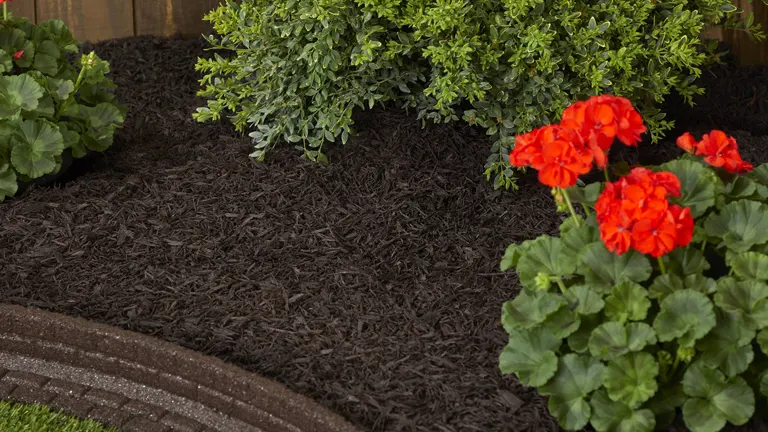
Inorganic mulches are made from non-living materials such as plastic, rubber, or geotextiles. These materials are effective in suppressing weeds and conserving soil moisture. However, they don’t improve soil structure or add nutrients. Inorganic mulches are less environmentally friendly due to their synthetic nature and potential for soil and water contamination, but they can be useful in specific applications where long-term weed control is essential.
Organic Mulch

This category includes natural, decomposable materials like grass clippings, wood chips, and tree bark. Organic mulches enrich the soil as they break down, adding nutrients and improving soil structure. However, as they decompose, they can deplete the nitrogen in the soil, so it may be necessary to add a nitrogen supplement to maintain a balanced soil composition. Organic mulch is a popular choice for gardeners aiming to enhance soil fertility naturally.
Mineral Mulch
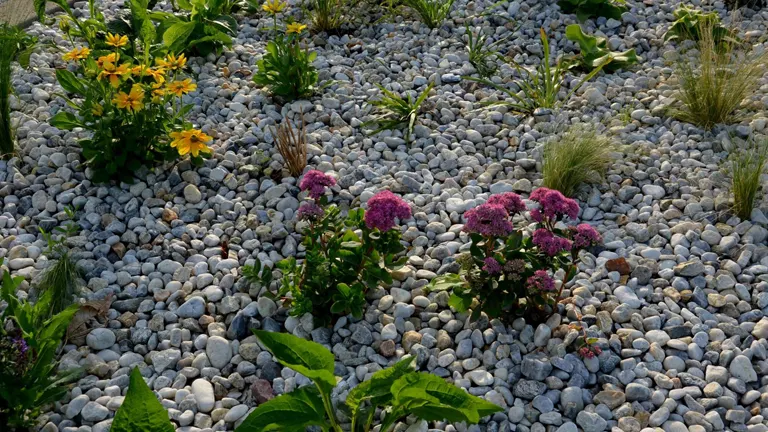
This type of mulch includes gravel, pebbles, or decorative rocks. Often chosen for aesthetic reasons, mineral mulch is durable and low maintenance. It’s particularly useful in xeriscaping or in areas where water conservation is a priority. While mineral mulch doesn’t provide the soil-enhancing benefits of organic options, it’s an excellent choice for pathways, rock gardens, or around succulents and other drought-tolerant plants.
Acidifying Mulch
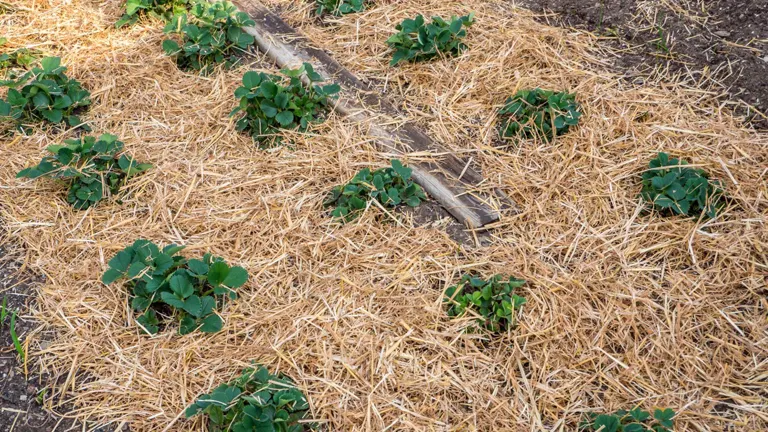
Some organic mulches, like pine needles or certain types of leaves, can help acidify the soil as they decompose. This is beneficial for acid-loving plants like azaleas, rhododendrons, and blueberries. Acidifying mulches can help maintain the pH balance these plants need to thrive without the need for chemical soil amendments.
Decorative Mulch
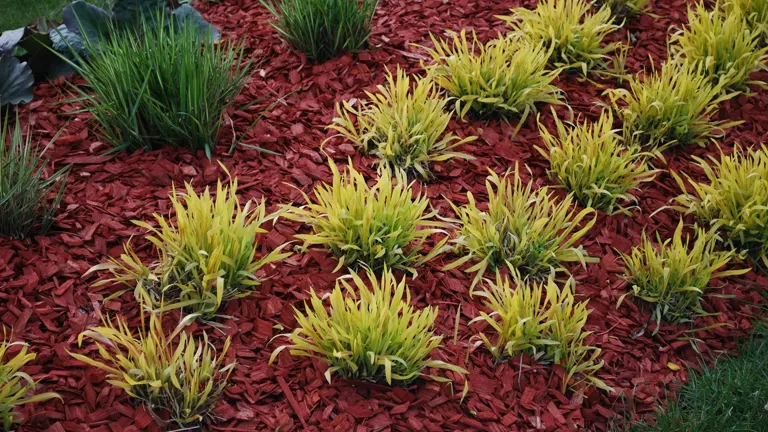
Focused on aesthetics, decorative mulch includes options like colored wood chips or cocoa hulls. While these can enhance the visual appeal of garden beds, they often offer fewer benefits in terms of soil health and can sometimes be less effective in weed suppression and moisture retention. When using decorative mulch, it’s important to consider the overall health of the garden and not just the appearance.
Using Specific Leaf Types in Mulching
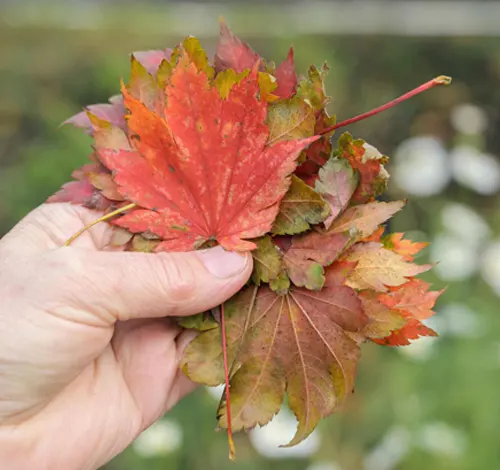
When considering the decomposition rate of leaves for mulching, maple, birch, and ash stand out as ideal choices. These leaves decompose rapidly, enriching the soil with essential nutrients in a short period. For a more balanced approach to mulching, it’s beneficial to mix these fast-decomposing leaves with slower ones. This combination ensures immediate nutrient release and long-term soil stability.
In contrast, oak and beech leaves decompose more slowly, making them suitable for areas that require long-lasting mulch, such as walkways or around trees. Their slower breakdown process provides extended weed control and soil protection. However, caution is advised with walnut leaves due to their juglone content, a compound that can hinder the growth of certain plants. These leaves are best utilized away from sensitive vegetation or in areas where their allelopathic properties can be used to control invasive species.
A practical mulching strategy often involves layering different types of leaves. For instance, a base layer of oak leaves can be used for their durability and longevity, topped with faster-decomposing maple leaves for quicker nutrient release. This layering technique maximizes the benefits of each leaf type, contributing to a healthier garden ecosystem.
How to Make Leaf Mulch
Creating leaf mulch is a simple and rewarding process that can greatly benefit your garden. Here’s a step-by-step guide to making your own leaf mulch:
1. Collecting Leaves
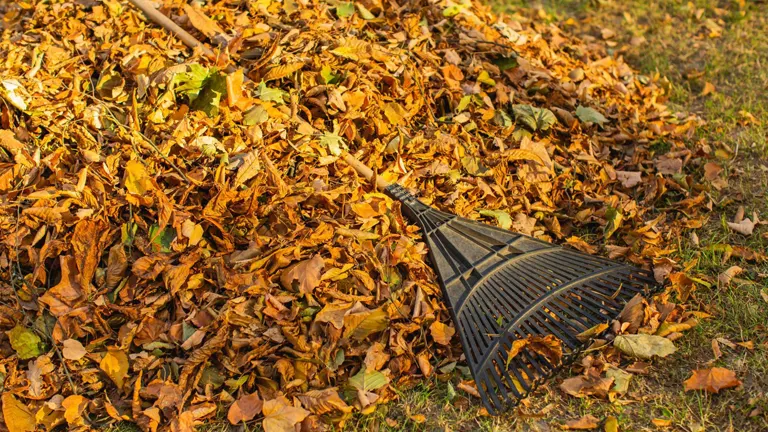
Start by gathering the fallen leaves. This can be done using a rake for a more traditional approach, a leaf blower for efficiency, or even a lawnmower. The method you choose may depend on the size of your yard and the volume of leaves you have. Each tool has its benefits: rakes can be more thorough in smaller areas, leaf blowers offer speed and ease, and lawnmowers can simultaneously collect and shred the leaves.
2. Shredding the Leaves
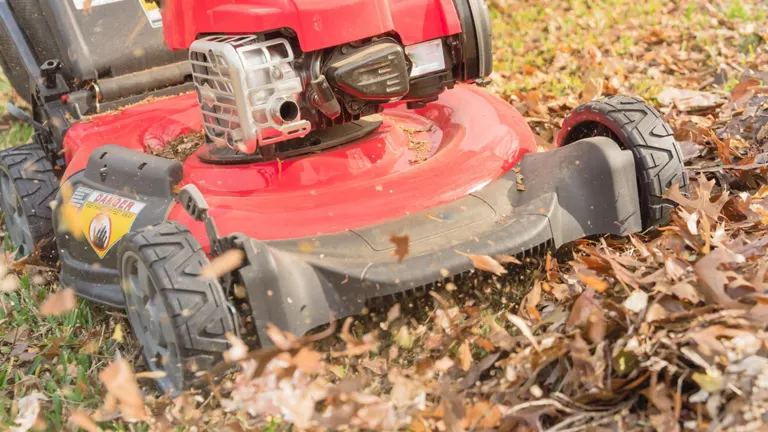
Once you have gathered your leaves, the next step is to shred them. This can be effectively done using a lawnmower equipped with a shredding function, or a wood chipper for larger volumes. Shredding the leaves increases the surface area, speeding up the decomposition process. It also prevents the leaves from matting, which can create barriers to moisture and air reaching the soil.
3. Composting the Shredded Leaves

After shredding, transfer the leaves to a compost bin or store them in yard waste bags. It’s important to keep the shredded leaves moist, as this aids in their decomposition. The composting process involves the leaves breaking down over time, turning into a rich, organic material that will benefit your garden. You can turn the pile every few weeks to ensure even decomposition and aerate the material.
4. Creating Leaf Mold

The final product, leaf mold, is achieved after about six months of composting. This material is a nutrient-rich, earthy, and crumbly substance that can be used as a fantastic soil amendment. Leaf mold is especially good for improving soil structure and water retention.
Using Leaf Mulch Using Leaf Mulch in Your Garden
Spread a layer of leaf mulch approximately two to three inches thick around your plants, trees, and garden beds. The best time to do this is in spring or early summer, as this is when plants are beginning to grow and can benefit the most from the additional nutrients and moisture retention. However, be mindful of the type of leaves you use. Avoid leaves from evergreens, holly, pine needles, camphor, walnut, or eucalyptus, as they decompose slowly and can release substances harmful to some plants.
Organic Leaf Mulch vs. Synthetic Mulch
When it comes to choosing between organic leaf mulch and synthetic mulches, the benefits of organic mulch usually outweigh those of synthetic alternatives. Organic leaf mulch not only provides a rich source of nutrients but is also environmentally friendly. It’s part of a sustainable gardening cycle that involves recycling organic matter back into the soil, thereby nurturing plants naturally and conserving resources. Synthetic mulches, while sometimes beneficial for specific purposes, do not offer the same soil-enhancing benefits and can be less environmentally sustainable.
Conclusion
The use of leaf mulch is a simple, cost-effective, and eco-friendly way to enrich your garden. By recycling autumn leaves into mulch, you’re not only nurturing your garden but also contributing to a more sustainable environment. Embrace this natural gift and watch as your garden transforms into a healthier, more vibrant space.
FAQs
- Can I use any type of leaf for mulching?
Mostly, yes. However, avoid leaves from evergreen trees, walnut, eucalyptus, and holly, as they decompose slowly and may contain substances harmful to some plants. - How does leaf mulch compare to commercial fertilizers?
Leaf mulch slowly releases nutrients into the soil, improving structure and health organically. While it doesn’t replace all fertilizer needs, it significantly reduces the dependence on commercial products. - Is leaf mulching a good option for vegetable gardens?
Absolutely! Leaf mulch enriches the soil, retains moisture, and helps regulate temperature, all beneficial for vegetable gardens. - How often should I replace or add new leaf mulch?
Typically, refreshing your leaf mulch once a year is sufficient. However, this can vary based on your garden’s specific needs and local climate conditions. - Can leaf mulch attract pests?
While it can provide a habitat for beneficial insects, proper composting and not over-mulching help minimize attracting harmful pests. - How fine should the leaves be shredded for effective mulching?
The finer, the better. Smaller pieces decompose faster and prevent matting, which can impede water and air reaching the soil. - Is it possible to over-mulch with leaves?
Yes. Too much mulch can suffocate plants and disrupt moisture and air flow. A layer of 2-3 inches is usually ideal. - Does leaf mulch acidify the soil?
Some leaves, like pine needles, can slightly acidify the soil. However, most leaf mulch has a minimal effect on soil pH. - Can I use leaf mulch in container gardens?
Certainly! Leaf mulch can be an excellent top layer for container plants, helping retain moisture and regulate soil temperature. - Is leaf mulching suitable for all climate types?
Yes, leaf mulching is versatile and beneficial in various climates, from arid to temperate regions. Adjust the mulching technique to suit your specific climate conditions.
We appreciate your participation! Don’t hesitate to share your firsthand experiences and insights on the topic of Maximizing Garden Health: A Step-by-Step Guide to Using Leaf Mulch in the comments section below. Your valuable insights can greatly benefit fellow garden enthusiasts, empowering them to make informed decisions and enhance their garden’s vitality based on real-world experiences. Make your voice heard and become a valuable contributor to the gardening community’s knowledge about the benefits of leaf mulch!

David Murray
Forestry AuthorI'm David Murry, a forestry equipment specialist with a focus on chainsaw operation. With over 13 years of experience, I've honed my skills in operating and maintaining a wide range of machinery, from chainsaws to log splitters. My passion for the outdoors and commitment to sustainable forestry drive my work, which emphasizes safety, efficiency, and staying updated with industry advancements. Additionally, I'm dedicated to sharing my expertise and promoting environmental awareness within the forestry community.






Leave your comment